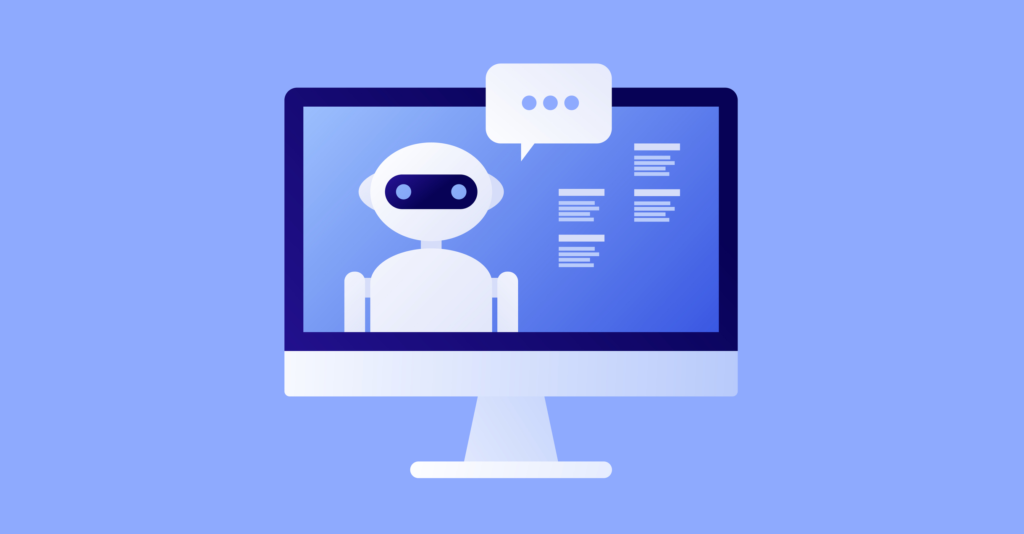Chatbots have become an integral part of online customer service, personal assistants, and even entertainment. They simulate conversation with users through text or voice interfaces. Thanks to advances in Artificial Intelligence (AI) and Natural Language Processing (NLP), building your own chatbot is easier than ever — even if you’re new to AI!
In this tutorial, we’ll walk through building a simple AI chatbot in Python using the ChatterBot library. This will give you a solid foundation to explore more advanced chatbots in the future.
What is a Chatbot?
A chatbot is a software application designed to simulate human conversation. It can answer questions, provide recommendations, or perform tasks — all by interacting with users in natural language.
There are two types of chatbots:
- Rule-Based: Follow predefined rules and responses.
- AI-Based: Learn from data and can understand context better.
Our project will focus on an AI-based chatbot.
Why Use Python?
Python is one of the most popular languages for AI development due to its simplicity and vast ecosystem of libraries. For chatbot development, Python offers libraries like:
- ChatterBot: Easy-to-use AI chatbot library.
- NLTK: Natural language toolkit for text processing.
- TensorFlow/PyTorch: For advanced machine learning models.
Step 1: Setting Up Your Environment
Before we begin, make sure you have Python installed (preferably Python 3.7+). You can download it from python.org.
Next, install the chatterbot and chatterbot_corpus libraries using pip:
pip install chatterbot
pip install chatterbot_corpus
If you encounter installation issues, especially with dependencies like spacy, make sure to follow their installation instructions as well.
Step 2: Writing the Chatbot Code
Create a new Python file called chatbot.py and add the following code:
from chatterbot import ChatBot
from chatterbot.trainers import ChatterBotCorpusTrainer
# Create a new chatbot instance
bot = ChatBot(
'CodexBot',
storage_adapter='chatterbot.storage.SQLStorageAdapter',
logic_adapters=[
'chatterbot.logic.BestMatch',
'chatterbot.logic.MathematicalEvaluation'
],
database_uri='sqlite:///database.sqlite3'
)
# Create a new trainer for the chatbot
trainer = ChatterBotCorpusTrainer(bot)
# Train the chatbot based on the English corpus data
trainer.train('chatterbot.corpus.english')
print("Chatbot is ready! Type something to start a conversation. Type 'exit' to stop.")
while True:
try:
user_input = input("You: ")
if user_input.lower() == 'exit':
print("Goodbye!")
break
response = bot.get_response(user_input)
print("Bot:", response)
except (KeyboardInterrupt, EOFError, SystemExit):
print("\nGoodbye!")
break
Step 3: How the Code Works
- Creating the ChatBot instance: We name our bot “CodexBot”. We specify a storage adapter to save conversation data and a logic adapter to decide how the bot responds. We also add a mathematical evaluation adapter so it can solve math questions.
- Training the bot: We use the built-in English corpus for training. This corpus contains a wide variety of conversational data.
- Running the chatbot: The program enters an infinite loop, where it waits for your input and replies with the bot’s response. You can type “exit” to stop the conversation.
Step 4: Running Your Chatbot
Run your chatbot script using:
python chatbot.py
Start chatting! Try simple greetings like “Hello”, ask questions like “What’s your name?”, or even type math problems such as “What is 5 plus 7?”.
Step 5: Improving Your Chatbot
Now that you have a basic chatbot running, here are ways to make it smarter:
1. Custom Training Data
You can create your own training data for specialized domains like tech support or personal assistants.
trainer.train(
"path/to/your/custom_corpus.yml"
)
2. Add More Logic Adapters
ChatterBot supports different logic adapters like TimeLogicAdapter to answer time-related queries.
3. Integrate with Web or Messaging Platforms
Use frameworks like Flask or Django to create a web interface, or connect your chatbot with messaging platforms such as Telegram or Slack.
Step 6: Things to Keep in Mind
- ChatterBot limitations: It’s great for beginners but may not scale well for complex conversational AI. For advanced bots, explore deep learning frameworks like TensorFlow or Hugging Face Transformers.
- Data Privacy: Always be mindful of user data and privacy when deploying chatbots publicly.
- Continuous Learning: Real-world chatbots benefit from ongoing training with user conversations.
Conclusion
Building your first AI chatbot in Python doesn’t have to be intimidating. With tools like ChatterBot, you can quickly prototype a conversational AI to experiment, learn, and build practical applications.
Whether for fun, learning, or business, chatbots are a fantastic way to dive into AI and natural language processing. Try extending the example here by adding your own data, integrating it into apps, or improving its intelligence.
